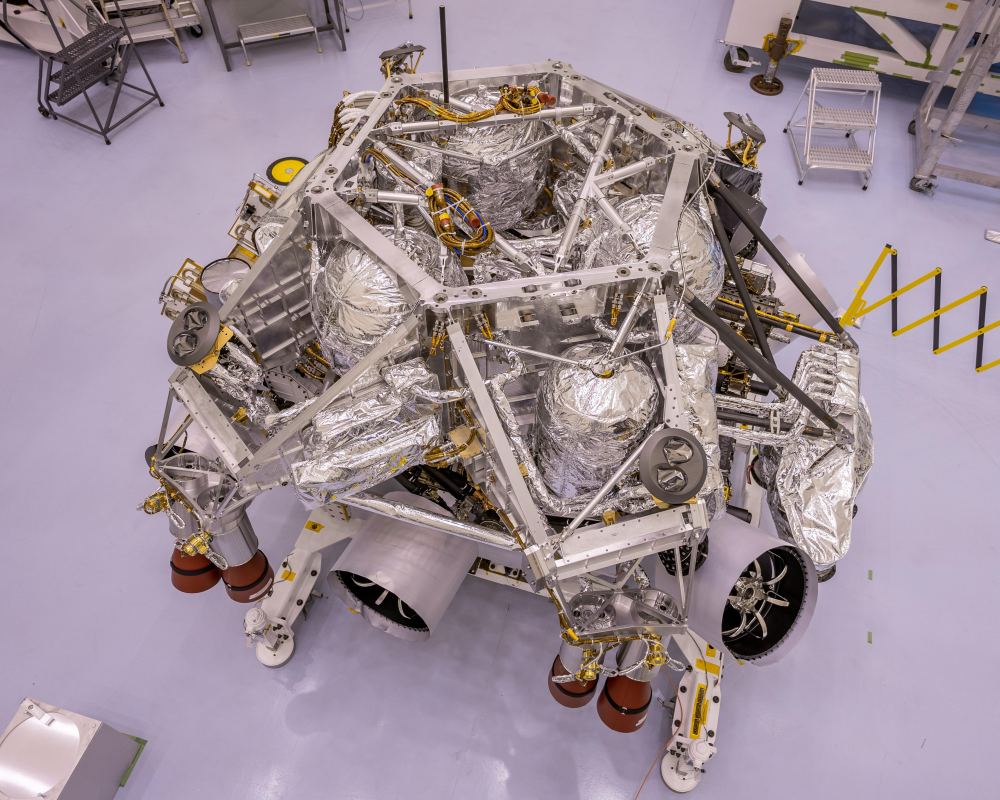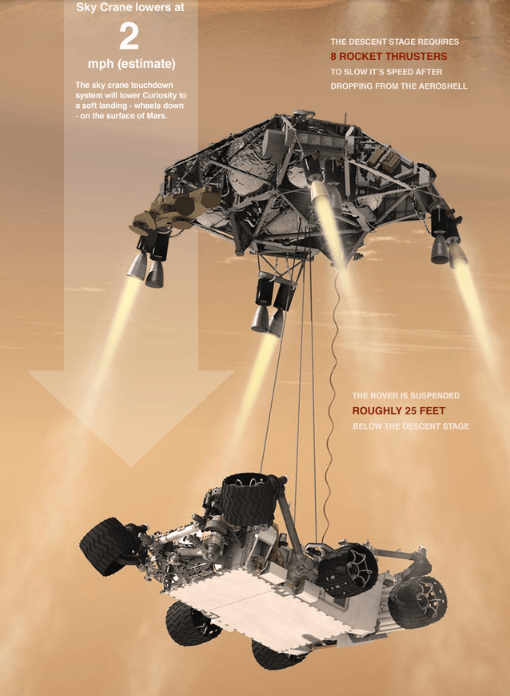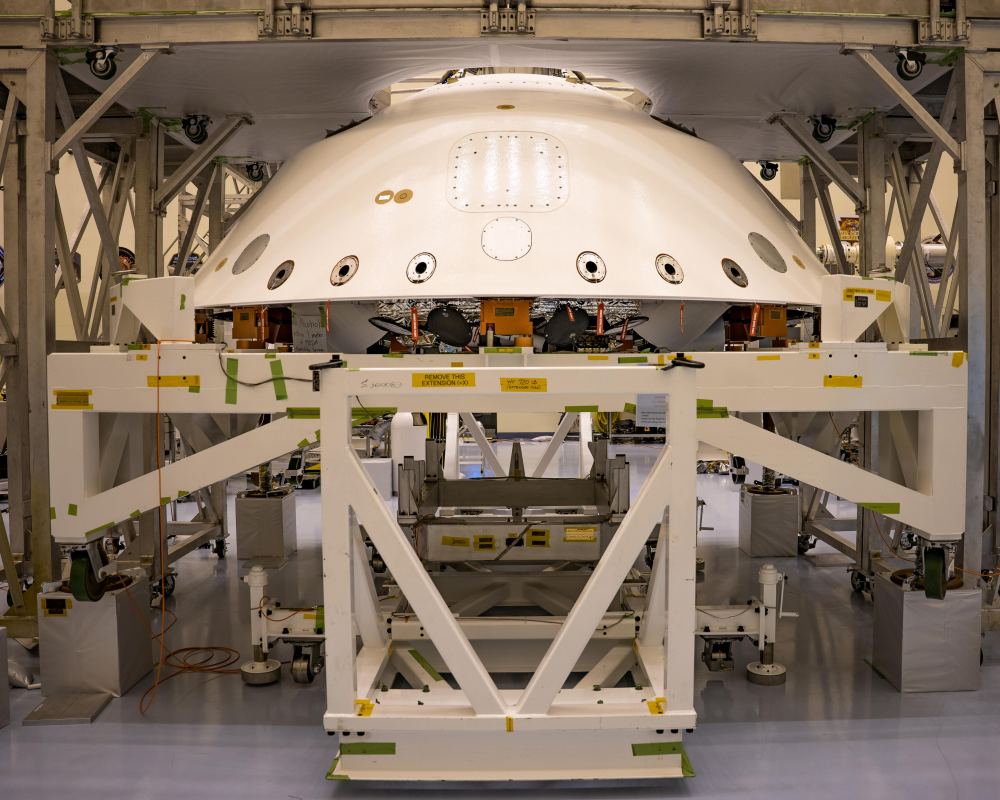70 days from now, the next launch window to Mars opens. That’s when NASA will launch their Perseverance Rover. New images from NASA show the advanced rover being put into the fairing, readying it for its long journey.
Engineers are putting the rover and other components into the configuration they’ll be in when they’re launched aboard a ULA Atlas V rocket. They call this process “vehicle stacking,” and it started back on April 23rd. Key to the whole process is mating Perseverance itself to its descent-stage, called the Entry, Descent, and Landing Stage (EDLS).
The vehicle stacking process is a day-long event, and it starts with lifting the descent stage onto the rover body. Then the two are connected with flight-separation bolts.

When touchdown on Mars approaches, these bolts will be removed with pyrotechnic charges, and the skycrane maneuver will start. That’s when cable spools out, and the rover is suspended 7.6 meters (25 ft) below the rocket-powered descent stage. Once Perseverance senses touchdown, more charges are fired, and the cables are released. Then the rocket stage flies away, leaving the rover by itself.
“Attaching the rover to the descent stage is a major milestone for the team because these are the first spacecraft components to come together for launch, and they will be the last to separate when we reach Mars,” said David Gruel in a press release. Gruel is the Perseverance rover assembly, test, and launch operations manager at NASA’s Jet Propulsion Laboratory in Southern California, which manages rover operations. “These two assemblies will remain firmly nestled together until they are about 65 feet [20 meters] over the surface of Mars.”

The backshell or aeroshell is the other component. Once the rover and the descent stage are mated, they’re put inside the protective backshell, which protects the rover during entry into the Martian atmosphere.

Perseverance’s landing procedure is similar to Curiosity’s, and its famed “Seven minutes of terror.” Seven minutes is the time it takes for the rover to descend through Mars’ atmosphere. During that time, it’s all up to the automated descent system to get the craft safely to the surface.
A primary improvement to Perseverance’s landing system is the “Terrain Relative Navigation” (TRN) system. It works in the final approach to the surface, comparing real-time camera images with onboard images of the landing area. The TRN improves the landing accuracy of the rover, and helps it avoid obstacles.
Part of the TRN is a “range trigger” that Perseverance will use to deploy its parachute. Earlier missions to Mars deployed their parachutes as early as possible, but Perseverance will be more selective, timing parachute deployment to guide the rover into a smaller landing ellipse than Curiosity.
As remarkable as it sounds, the Perseverance Rover is on schedule for its launch, despite the novel coronavirus pandemic. Many NASA/JPL personnel are working from home, which hasn’t affected the launch date.
Regardless of which day it launches—as long as it does launch in the upcoming window—it will land at Mars’ Jezero Crater on February 18th, 2021, according to NASA.


